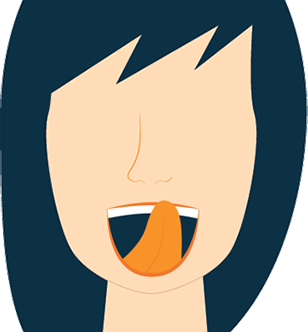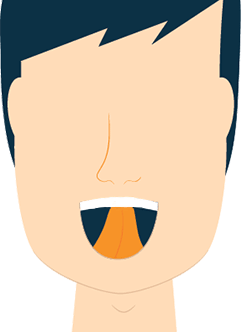About 45 percent1 of adults occasionally snore, while 25 percent are regular snorers.
Snoring may be common, but treating it is not a one-size-fits-all approach. You may have tried multiple remedies with no success, but if you’re still on the lookout for snoring relief, there is another method that could be the answer you need.
Certain mouth exercises for sleep apnea that are simple enough to do on your own could also minimize snoring.
In this article, we’ll share different exercises for sleep apnea, along with other tips and tricks to reduce snoring so that you and your partner can both have a good night’s rest.
Why Do We Have Sleep Apnea and Snore?
If you snore, this may be because you have sleep apnea2. Even though snoring is a symptom of sleep apnea, just because someone snores, this doesn’t necessarily mean they have sleep apnea. Other reasons you snore might. According to Yale Medicine, the following are all reasons why someone may snore outside of just sleep apnea2:
- Excess weight
- Weak tongue and throat muscles
- Pregnancy
- Deviated nasal septum
- Nasal congestion from a cold, allergies, or sinus infection
- Mouth anatomy
- Sleeping on your back
There are two types of sleep apnea: obstructive (OSA) and central (CSA). Central sleep apnea3 is when your brain is unable to properly send signals to your breathing muscles. Obstructive sleep apnea, however, is much more common, and it the result of the muscles in the back of the throat relaxing to the point that they create a narrow path for your airways — so much so that you can’t get enough oxygen.
Some of the reasons why a person might have obstructive sleep apnea can also overlap with general reasons for snoring. These risk factors include3:
- Excess weight
- Thicker neck
- Narrow throat
- Gender (men are more likely to have OSA)
- Age (older adults are at an increased risk of OSA)
- Family history of sleep apnea
- Using alcohol, sedatives, or tranquilizers
- Smoking
- Nasal congestion due to illness or allergies
- Certain medical conditions, including hypertension, type 2 diabetes, and asthma
Myofunctional Therapy for Sleep Apnea and Snoring
Myofunctional therapy4 refers to an exercise program that targets problems with the face and mouth known as Orofacial Myofunctional Disorders (OMDs). Most OMD cases originate from inadequate breathing in the nose or mouth.
According to the Academy of Orofacial Myofunctional Therapy, research has found that this form of treatment has successfully reduced snoring and sleep apnea symptoms. The goal is to have these exercises train muscles in the tongue, throat, and face to reduce airway obstruction.
Sleep Apnea Exercises
Throat Tiger Yell
Contrary to its title, this exercise is silent. To start, open your mouth as wide as you can as if you’re about to scream. Then, hold the position for five minutes and do your best to resist the urge to yawn.
If you do the throat tiger yell daily, it should make the muscles in the back of your throat stronger.

Tongue Slide
This tongue movement works to strengthen your jaw. You begin by sticking your tongue out, and then you stretch it toward your nose, making your best attempt at touching your tongue to your nose. Very few people can actually make contact, but the point of this workout is to attempt it.
The trick is to do this enough times to make your jaw stronger. Hold each “rep” for a few seconds, relax, and then repeat ten times.
In addition to sleep apnea, you can use this drill to target snoring.

Soft Palate Blowing
The palate, also known as the roof of the mouth, requires some conditioning to alleviate sleep apnea and snoring. Unlike the first two exercises, this one involves breathing only, and you can do this up to four times a day.
To begin, breathe through your nose. Close your mouth and then push the air out through your lips. When you feel resistance in the back of your throat, you’ll know it’s working.

Jaw Tension
Start with your mouth closed and the tip of your tongue touching the roof. Then, slowly begin opening your mouth but keep your tongue in contact with the roof for as long as possible. Eventually, your mouth will be fully open.
Do this a total of 10 times.

Play the Didgeridoo
Have you heard of a didgeridoo? This is a large wind instrument developed more than a thousand years ago by the indigenous people of present-day Australia. The didgeridoo is still used today, so you should be able to find one to practice with.
Playing the didgeridoo5 should help strengthen the muscles in the upper airways because as you play, you’re exhaling and puffing out your cheeks.
Exercises to Stop Snoring
Roof Smoosh
Imagine the roof of your mouth as a suction, and use it to grip your tongue until there’s no space or air in between. Hold each rep for a count of three and repeat 20 times.
Tongue Carpet
This exercise consists of transforming your tongue into a “carpet” that lines the bottom of your mouth. Begin by pressing your tongue to the back of your bottom teeth. Then force the tongue down to the bottom of the mouth while keeping it in contact with your teeth.
Say Ahhhhh!
Just as the doctor asks when you visit for a health checkup, open your mouth, tilt your head back slightly, and give a long and slightly exaggerated “ahhhhh.” Repeat this 20 times.
Cheek Push
Put your right index finger inside your mouth and press it against your inner left cheek. Repeat ten times and then switch sides.
Chew Evenly
Typically when we eat, we favor one side of our mouth more than the other, preventing the other side from getting its daily workout. Therefore, this exercise focuses on reminding yourself to chew evenly on both sides.
By chewing evenly, you also ensure that the teeth on both sides of your mouth are used equally.
Additional Snoring and Sleep Apnea Remedies
Weight Loss
Extra weight in the neck and throat can collapse your airways, which can lead to snoring and sleep apnea. Therefore, losing weight could improve your symptoms.
Positional Therapy
This approach involves training people to rest on their side, the optimum sleep position for those with an apnea disorder. Research6 reveals this treatment can be effective for those with POSA, which is when apnea symptoms are brought on by the position you sleep in.
Avoid Alcohol
You should rethink having that glass of wine before bed. Consuming too much alcohol7 can cause you to snore because it relaxes the muscles in your throat, which can result in airway obstruction.
Don’t Smoke
Some researchers hypothesize that smoking causes upper airway inflammation, which is why smokers are more prone to snoring. Though it can take several years for results to show, a 1988 study8 found that people who quit smoking showed a decline in snoring.
CPAP Machines
A continuous positive airway pressure (CPAP) machine is one of the most popular forms of treatment for OSA. These devices are made to supply you with air pressure with the use of a mask.
Check Out Our Guide: Best CPAP Machine
Oral Devices
In addition to exercises for the mouth, you may also consider using oral devices that are designed to help open up your throat while you’re at rest. The best way to access one of these appliances is to contact your dentist who can make one that’s properly fitted for you.
Learn More: Oral Appliances for Sleep Apnea
Use a Nasal Strip
Nasal strips are an inexpensive way to combat snoring. These handy devices work to lift and open the nasal passages. The increased airflow allows for better breathing and a reduced risk of snoring.
Try a New Mattress
A mattress may not be the cause of your snoring, but it could help. We covered earlier that side sleeping is recommended for those with sleep apnea, and an uncomfortable bed could make it hard to rest that way. Consider investing in a quality mattress that could make it easier to adjust your sleep position and leave you less likely to snore at night.
View Our Guide: Best Mattress for Sleep Apnea and Best Mattress for Snoring
Surgery
In more extreme cases, surgery may be required. However, this is usually considered after all other options have been exhausted.
Frequently Asked Questions
Are snoring exercises effective?
During a 2009 study9, researchers found that oropharyngeal exercises, which refers to the part of the throat at the back of the mouth, successfully minimized the severity and symptoms of patients with obstructive sleep apnea.
How often should you do snoring exercises?
The Academy of Orofacial Myofunctional Therapy says you should do these workouts daily until the issue is corrected. They add that the length of treatment can vary, but typically lasts 6-12 months.
Is snoring dangerous?
According to the Mayo Clinic, snoring could be a sign of an underlying condition, including OSA. Sleep apnea can become dangerous when left untreated, as it increases your risk of serious health complications such as heart disease, liver problems, or diabetes.
Find Out More: Can Sleep Apnea Kill You?

Jill Zwarensteyn
Editor
About Author
Jill Zwarensteyn is the Editor for Sleep Advisor and a Certified Sleep Science Coach. She is enthusiastic about providing helpful and engaging information on all things sleep and wellness.
Combination Sleeper
References:
- “Why Do People Snore? Answers for Better Health”. Johns Hopkins Medicine. Webpage accessed December 4, 2024.
- “Snoring”. Yale Medicine. Webpage accessed December 4, 2024.
- “Sleep apnea”. Mayo Clinic. Last modified April 6, 2024.
- “WHAT IS MYOFUNCTIONAL THERAPY?”. Academy of Orofacial Myofunctional Therapy. Webpage accessed December 4, 2024.
- Puhan, Milo A., et al. “Didgeridoo playing as alternative treatment for obstructive sleep apnoea syndrome: randomised controlled trial’. The BMJ. 2006.
- de Vries, Grietje E., et al. “Usage of Positional Therapy in Adults with Obstructive Sleep Apnea”. Journal of Clinical Sleep Medicine. 2015.
- “Snoring”. Mayo Clinic. Last modified December 22, 2017.
- Bloom, JW., Kaltenborn, WT., Quan, SF. “Risk factors in a general population for snoring. Importance of cigarette smoking and obesity”. National Library of Medicine. 1988.
- Guimarães, Kátia C., et al. “Effects of oropharyngeal exercises on patients with moderate obstructive sleep apnea syndrome”. National Library of Medicine. 2009.